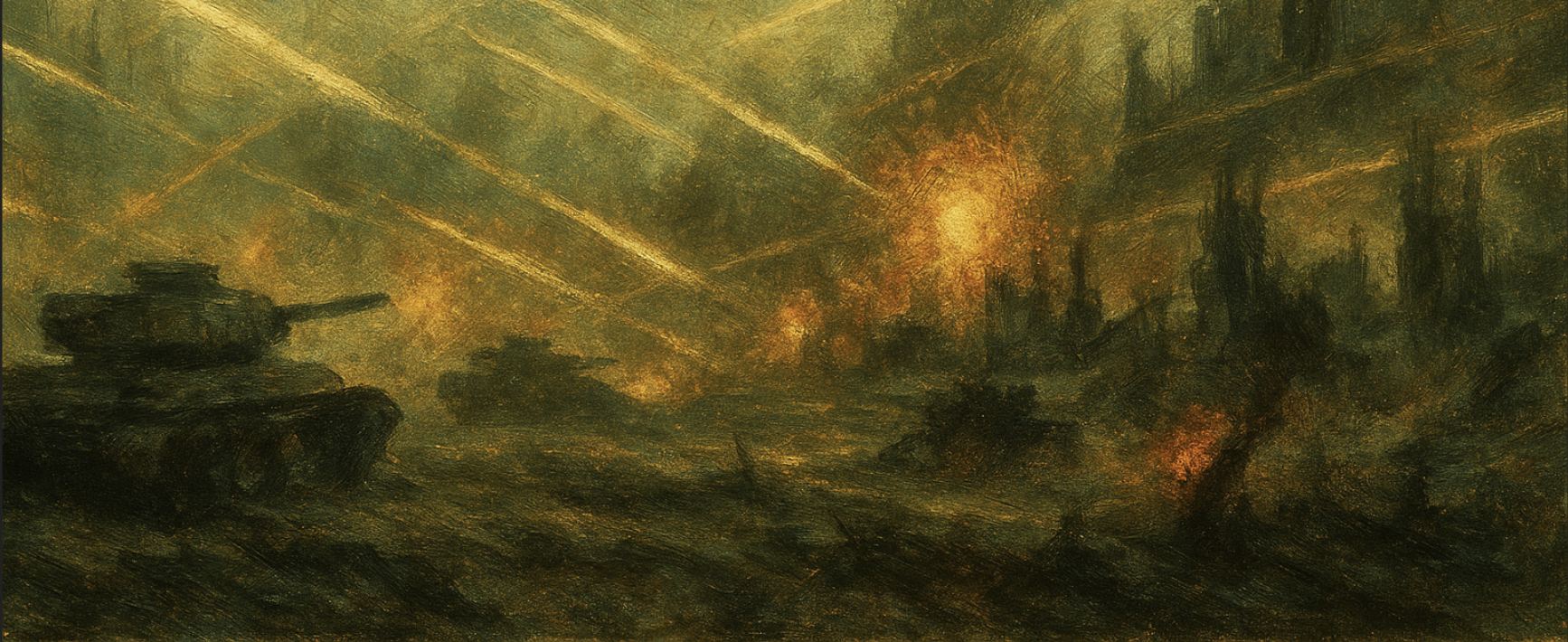The Continental War
The war resulted in unfathomable suffering and destruction, and left entire nations in ruins and populations displaced, massacred, or decimated. It was a war never before seen since the time of the Birthright Wars, and even those were fought by undeveloped nations against unorganised groups of invaders. This was the first time in history that the entire industrial-age might of multiple nations was brought against one another. Lavenna was a region particularly devastated by the war, and saw its population decrease by almost half, and during its several decades long occupation had its natural environment poisoned and almost completely sterilized. DISPLAYED TEXT
The Conflict
Prelude
For years after the unification of Seripha by the confederation of the twelve in (PH), the nation dramatically centralised itself and enacted an immense industrialisation attempt. Within decades, the previously largely rural and nomadic country was transformed into undulating rolls of chimneys and rapidly growing slums. The population boomed as the tribes were forced to resettle into cities, with Lutenia growing by almost a million inhabitants in just 10 years. At the same time, the Seriphanese government set about the eradication of any trace of old culture within the nation, displacing hundreds of thousands and killing thousands of wealthy individuals. This ethnic cleansing campaign went largely unnoticed outside of the nation's borders, due to widespread political and social strife at the time across the continent. The displacements only added to this. Lavenna, to the south of Seripha and beyond the towering Merkosta mountains, was particularly destabilised and its already fragmented domains were brought into turmoil at the influx of refugees. Revolution broke out in the Amaranthine Confederation to the Northeast, facing a multiple front war against Nyrish insurgents, Boronist Revolutionaries, and Aukvari Fighters. Kannosta was in the midst of a political upheaval that saw many of its major cities occupied by armed protestors and its capital under curfew. It was amidst this chaos that Seripha saw an opportunity. The supercontinent, more divided and unstable than ever, and a Seripha with a newfound industrial might. Without much resistance, they expanded easily out of their southern holdings in Merkosta (which had been a long-time stronghold of the mountain clans) and pushed into Vardasta, Priskipsa and Caldatra. They also eliminated the ancient powerhouse of the Hux'am Republic, sacking its capital. As Seriphanese aggression in Lavenna became more intense, the predominant military powers of the region finally decided to create a loose coalition for common defense in 452. Led mostly by the Parvald dynasty in Borashta, the Kiranto Clique in Vastonya, and with limited support from Rodanya, it was believed that such an alliance would be enough to restrain Seriphanese ambitions. These beliefs were shattered the moment that Seripha amassed troops along the Vastonyan border with Merkosta in 454, and mere days later swept across the Maroe river. With Kannosta also pledging its support to the coalition, and Seripha simultaneously invading the Cerulsian Confederation, the Continental War began.
Aftermath
Environmental Warfare
During the war, Seripha enacted a systematic campaign of ecological destruction and sterilization within their occupied territories. This was done with the goal of rendering the territories and puppet states under Seriphanese occupation completely dependent on them for now essential technologies and infrastructure critical to ensuring liveable conditions within the new ecological landscape. Naturally, Seripha placed the blame for the ecological destruction on their adversaries, accusing their enemies of cowardly razing the landscape with scorched earth tactics. Another reason for Seripha's campaign of ecological destruction was an attempt to affirm their notion of "Seripham", which asserted the superiority of the Skyborn Earth cultures and biology over any native life or Founder cultures. Therefore, the ecologically rich region of Lavenna posed a threat to their percieved superiority, and in order to reinforce their ideology, they sought to destroy any traces of native life on the planet. By the end of the war, Lavenna saw its biodiversity fall by a staggering 98%, with many of its once verdant landscapes reduced to anemic dustbowls. The Communes of Celvesso in particular, already a harsh desert, became virtually uninhabitable. The Republic of Alverro saw its once world famous rolling vineyards strip mined straight to bedrock, leaving gaping scars across the entire republic.Belligerents
Commissarial Powers
Varangian Coalition
Strength
Casualties
Objectives
Remove these ads. Join the Worldbuilders Guild




Comments